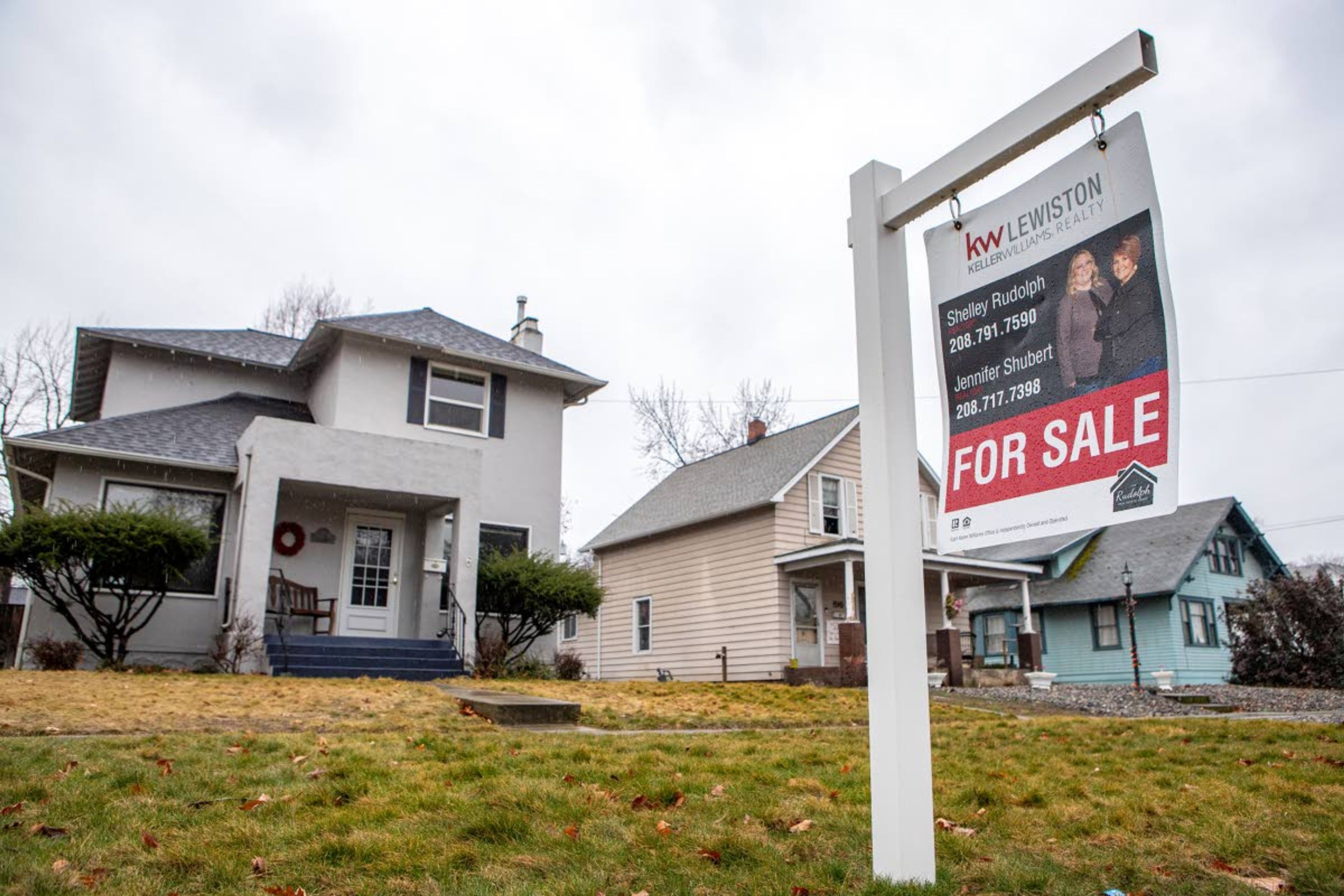Caleb Latella is the first to acknowledge he has everything working in his favor to find his first home.
As a young, healthy, single person, he doesn’t have to consider the needs of a spouse or children. He’s open to almost any kind of floor plan, including ones with lots of stairs.
He’s willing to live in Nez Perce or Asotin counties, preferably within about a 10-minute drive of his job at Jurgens & Co. in downtown Lewiston where he is a senior accountant.
His finances are more than solid. He has money for a down payment, largely because he had no debt when he completed college. He paid his tuition with scholarships and covered his other expenses with wages from part-time jobs.
Plus as a graduate of Clarkston High School, he has plenty of family members and friends who can help him identify leads.
Yet even with all of those advantages, Latella became so frustrated in his search that, in mid-February, he took the unusual step of seeking a home in a Facebook post.
“I was a little discouraged and a little bit more desperate in the sense that I made really generous offers on some of these houses and I didn’t get them,” he said.
UI Economist: We’re in a housing crisis
The challenges Latella faces are the product of a market in Lewiston, Clarkston, Moscow and Pullman where conditions are so extreme that a University of Idaho economist recently described the situation as a housing crisis.
Only wealthy households with annual incomes of six figures or more can afford homes in this area, which excludes low- and middle-income families, said Steven Peterson, a clinical associate professor of economics at UI.
“The cost of living in Idaho is supposed to be relatively low,” he said. “That may be fundamentally changing.”
Nez Perce County’s median household income was $58,107 from 2015-19, according to the U.S. Census.
“The effects are really, really kind of scary,” he said. “What a lot of people (don’t) realize is that the spike in housing prices is eroding our purchasing power and reducing our standard of living, so it should be something that we should be very concerned about.”
In January, the average price of a home in Nez Perce County reached $395,469, Peterson said. That’s a rise of 121% in about the last decade, he said.
Statistics indicate housing is a little less expensive in Asotin County and more in Latah County, he said.
The average price of a home sold in Moscow in the last six months of 2021 was $449,122, according to multiple listing statistics.
What families really pay for homes could be even higher, said Peterson, who recently examined home listings.
“I’m wondering where all those low-price houses are, because I’m not seeing them for sale,” he said.
Latella has observed a related trend in his home search.
The actual price of a home sometimes is tens of thousands of dollars more than the list price because bidding wars erupt, he said.
The first house he tried to buy was a four-bedroom, two-bathroom house with 2,400 square feet in the middle of Clarkston listed at $320,000.
It sold for more than $350,000 after seven potential buyers made offers following 16 showings in two days, he said.
Why so high?
The high prices that Latella and other would-be home buyers see in the market now are caused by a number of factors that are different than what shaped the housing bubble that burst during the Great Recession, said Peterson and Mike Moser, vice president of mortgage lending at P1FCU.
One of the key drivers then was housing loans being made with little vetting, which isn’t happening now, Peterson said.
When housing supply gets closer to demand, prices could moderate, Moser said.
“If they go down, I don’t see it being a drastic drop,” he said.
The deflation of housing prices in the aftermath of the Great Recession was one of the reasons that housing construction lagged for about 10 years ending in 2018, Peterson said.
“Demand for housing also fell off,” he said. “When people are afraid of losing their jobs or have lost their jobs, they tend to hold off on spending. Then around 2016, demand came back and supply wasn’t there.”
COVID-19 fed interest in purchasing homes, he said.
People were “trapped” in their homes because of pandemic precautions, saving money because stores and restaurants were closed and receiving government stimulus checks, Peterson said.
“Then (they) realized their home was too small for having to telecommute and take care of the kids, so there was an increase in demand as a result of people needing bigger homes and having the money to be able to buy them,” he said.
In Idaho, the need is amplified by all of the people moving to the state, which has been among the top five fastest-growing states since 1990, Peterson said.
“There’s definitely a strong in-migration coming to Idaho and it doesn’t look like it’s abating,” he said. “That’s been a huge impact.”
Making the market even more challenging are buyers who can pay all cash and don’t need a loan because they sold homes in places where housing prices are even more expensive, Moser said.
Shopping in a tight market
As tight as the market is, some people, including Latella, are still finding homes. He is expecting to close April 1 on a home between Clarkston and Asotin that he landed for the asking price.
Friends and family members alerted him to the listing on a Facebook market page after seeing his social media post, which generated about 10 leads.
“I’m happy … but I’m controlling my emotions until it’s final,” Latella said.
As cautiously optimistic as he is, he’s grateful his need for a home isn’t more urgent. His rent for a room at a friend’s house is reasonable and he and his friend get along.
The primary reason he wants to buy now is because he believes prices might increase as much as 20% in the coming year.
“I’m not in a rush to get out of there,” he said. “The main reason I want to buy a house is I’m worried that prices will just keep going up. Long-term, I want to own a house. I think it’s a good investment.”
Like Latella, Daniel Chambers hopes to be in the final stages of buying a home soon. Chambers moved to Lewiston from Virginia to be the senior pastor at Tammany View Baptist Church.
His wife is with their younger children, who are finishing the school year in Virginia, where one of their four kids is graduating from high school. He is staying in the home of a church member who is out of town on a long-term work assignment.
His home search is on pause until he sells his house in Virginia because he learned the market is so tight that no seller will accept a contingency that requires another property to sell first.
“I’m bringing a large family across the country,” Chambers said. “It’s important to have a home.”
He’s continuing to look at possibilities, considering anything in the Lewiston-Clarkston Valley and its surrounding areas.
His faith makes him confident that the right opportunity will present itself.
“We’re open to what the Lord has for us,” Chambers said.
Easing the bottleneck
Moving forward, the degree of difficulty for Chambers and others to buy a home will depend on a variety of factors.
Municipalities should be open to annexing new sections of land into their communities and relaxing rules in low-density residential zones to permit condominiums, duplexes, triplexes and mother-in-law cottages, Peterson said.
“With enough time, the private market will not entirely solve the problem, but they will mitigate it a lot if we allow the construction of new homes,” he said.
Moser expects that to happen too. In this next year, he anticipates there will be a rise in new home construction since there simply aren’t enough existing homes to meet demand.
“If (it) isn’t out there, you’ve got to go make it,” he said.
Williams may be contacted at ewilliam@lmtribune.com or (208) 848-2261.
“The effects are really, really kind of scary. What a lot of people (don’t) realize is that the spike in housing prices is eroding our purchasing power and reducing our standard of living, so it should be something that we should be very concerned about.”
Steven Peterson, a clinical associate professor of economics at UI











